15 September 2023
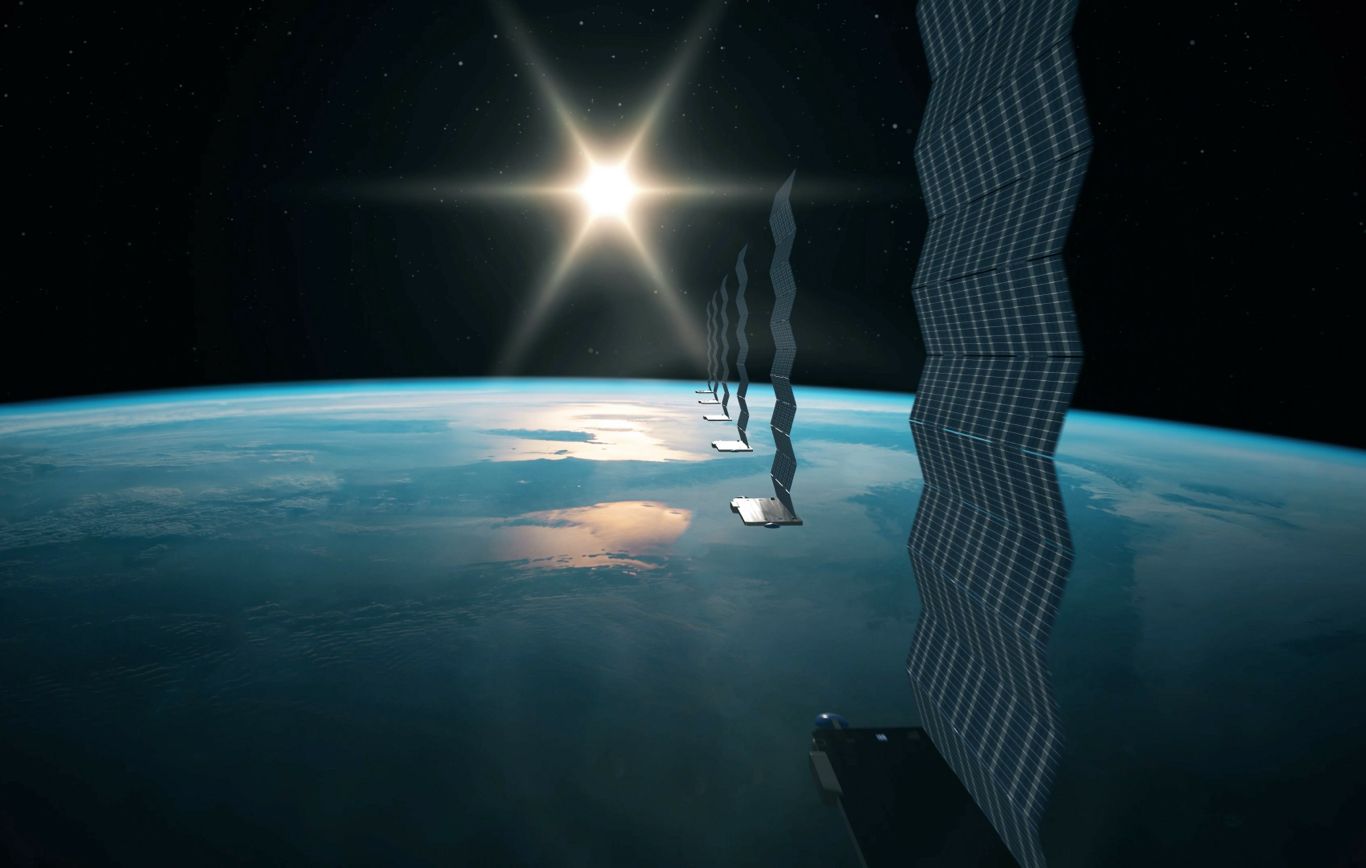
Elon Musk restricted Starlink in Ukraine (Image: Adobe)
On September 8th, Virgin Galactic launched their third commercial space launch. On the flight was an unusual payload; fossils of a two million-year-old collarbone and a 250,000-year-old thumb, believed to have belonged to ancient human ancestors. Matthew Berger, who carried the fossils from their home in South Africa and handed them to passenger Timothy Nash, said that "These fossils represent individuals who lived and died hundreds of thousands of years ago, yet were individuals who likely gazed up at the stars in wonder, much as we do.”
Lee Berger, a paleoanthropologist at the University of Witwatersrand, South Africa, paid tribute to our ancestors, saying that "Without their invention of technologies such as fire and tools, and their contribution to the evolution of the contemporary human mind, such extraordinary endeavours as spaceflight would not have happened.”
It is indeed the triumph of humanity and those who came before us, which has allowed us to take our next big step, into space. Yet we find ourselves at a crossroads, where new relations are being formed. But at the same time, the fallout from Earthly disputes and geopolitical conflict threatens to the stability of our new chapter.
India, China, UK & private entities pushing cooperation
At the end of last week, US president, Joe Biden, visited India where he met with Indian Prime Minister Narendra Modi, for a bilateral discussions. As well releasing a joint statement, emphasising the importance of “the shared values of freedom, democracy, human rights, inclusion, pluralism, and equal opportunities for all citizens”, the two also highlighted the importance of joint work in space.
Biden congratulated the rising space power on their successful Chandrayaan-3 lunar landing and Aditya-L1 solar observation missions. However, they went further, to commit to establishing a working group, focussed on commercial space collaboration. The US is, of course, the world leader in commercial space applications, and India is rapidly opening up its private sector in the space industry.
In 2020, India established the Indian National Space Promotion and Authorization Centre (IN–SPACe), an independant agency designed as a window to boost the Indian private sector. More recently, earlier this year, the ISRO announced that it was transferring its Small Satellite Launch Vehicle (SSLV) rocket launcher to the private sector.
Additionally, the two leaders, in their joint statement, announced that their respective agencies have “…commenced discussions on modalities, capacity building and training for mounting a joint effort to the International Space Station in 2024, and are continuing efforts to finalize a strategic framework for human spaceflight cooperation by the end of 2023.” In June, India also joined the US-led Artemis Accords, a framework outlining principles and guidelines for exploration of the Moon and beyond.
It seems that the US-Indian space relationship is blossoming, and may cause some concern to China and Russia, who also have laid out their own vision for our future in space.
European startup to work with India, UK pushes ties with UAE
European spacecraft startup, The Exploration Company, has also announced that it will be working with the ISRO (Indian Space Agency) for the launch of their reusable, orbital vehicle. Their “Nyx” vehicle is designed to deliver cargo and possibly astronauts to orbiting space stations, due to launch in 2027. However, before that, they will carry out a demonstration mission, named Bikini, slated for 2024, which will launch with the ISRO.
The UK are continuing their push to become a hub of cooperation in space. AzurX (Dubai), a space advisory company, will be working with UK-based AstroAgency in order to assist the UAE and Bahrain work with UK companies. The Arab nations and the UK have growing space industries, with the latter recently becoming the second most attractive place for private space investment, after the US.
Such relations as these go to show the diversification of the global space industry, and highlights the emergence of new leaders in a sector that was once dominated only by the few.
US claim on China threats, North Korea and Russia to collaborate
China also continue on their quest to reach out to global partners. An article from the Global Times this week highlighted how the China National Space Administration (CNSA) has “…shared over 1.5 terabytes of remote sensing satellite data with BRICS countries, and will continue to promote the application of remote sensing satellite data to all walks of life in BRICS members’ societies.”
BRICS nations are made up of Brazil, Russia, India, China and South Africa. Last week we also read that South Africa have become the latest nation to sign-up to China’s International Lunar Research Station project, a vision similar to the of the US Artemis project.
Russia and Iran also appear to be building ties. Last year Russia launched an Iranian satellite into orbit, marking an uptick in their space relations. Now this week it was revealed that the two nations will work together to develop a spacecraft within two years, a project led by the University of Tehran and the Moscow State University.
It seems that Russia has had to source new partners in the space sector, after severing ties with the US and the West after the Ukraine invasion.
This week the Valdimir Putin welcomed North Korean leader, Kim Jong-Un, for talks, before which he showed him around one of Russia’s modern space launch sites. Putin went on to say that Russia will assist North Korea in space, saying that "That's why we came here. The leader of the DPRK shows great interest in rocket engineering; they are also trying to develop space.”
North Korea have recently had failed attempts at launching their own satellites, but may now seek Russian help. This may come as an alarming development to the US and its allies, with Russia likely to look for weapons in return for space technology.
Is Elon Musk’s space domination helping US or hindering international relations?
Carrying on from last week’s revelation, that Elon Musk may have prevented Ukrainian forces from using Starlink to attack Russian targets in Crimea, questions have been raised surrounding Musk’s influence and the role of the private sector for defence purposes.
When asked about the incident, Secretary of State Antony Blinken avoided the issue, but admitted that “Starlink has been a vital tool for Ukrainians to be able to communicate with each other and particularly for the military to communicate in their efforts to defend all of Ukraine’s territory.” Nonetheless, Elon Musk has come under criticism for denying its use in direct conflict.
The US military does rely on SpaceX for a number of applications, such as satellite launches. Does this incident therefore mean that Musk retains too much influence in geopolitics and/or policy-making? Air Force Secretary Frank Kendall has suggested that “If we’re (US) going to rely upon commercial architectures or commercial systems for operational use, then we have to have some assurances that they’re going to be available," Kendall said.
However, it needs to be noted that at the time of the incident (September 2022), SpaceX was not under contract by the US military and Starlink had been offered to Ukraine for free after the Russian invasion, in a contract only with USAID, an independant government agency which administers civilian foreign aid.
This then raises two arguments; was Musk’s decision then vital in order to not escalate tensions and embroil the commercial sector in the conflict? Or does this incident represent the concerning weight of influence a private company/individual can have, due to their advanced space technology?
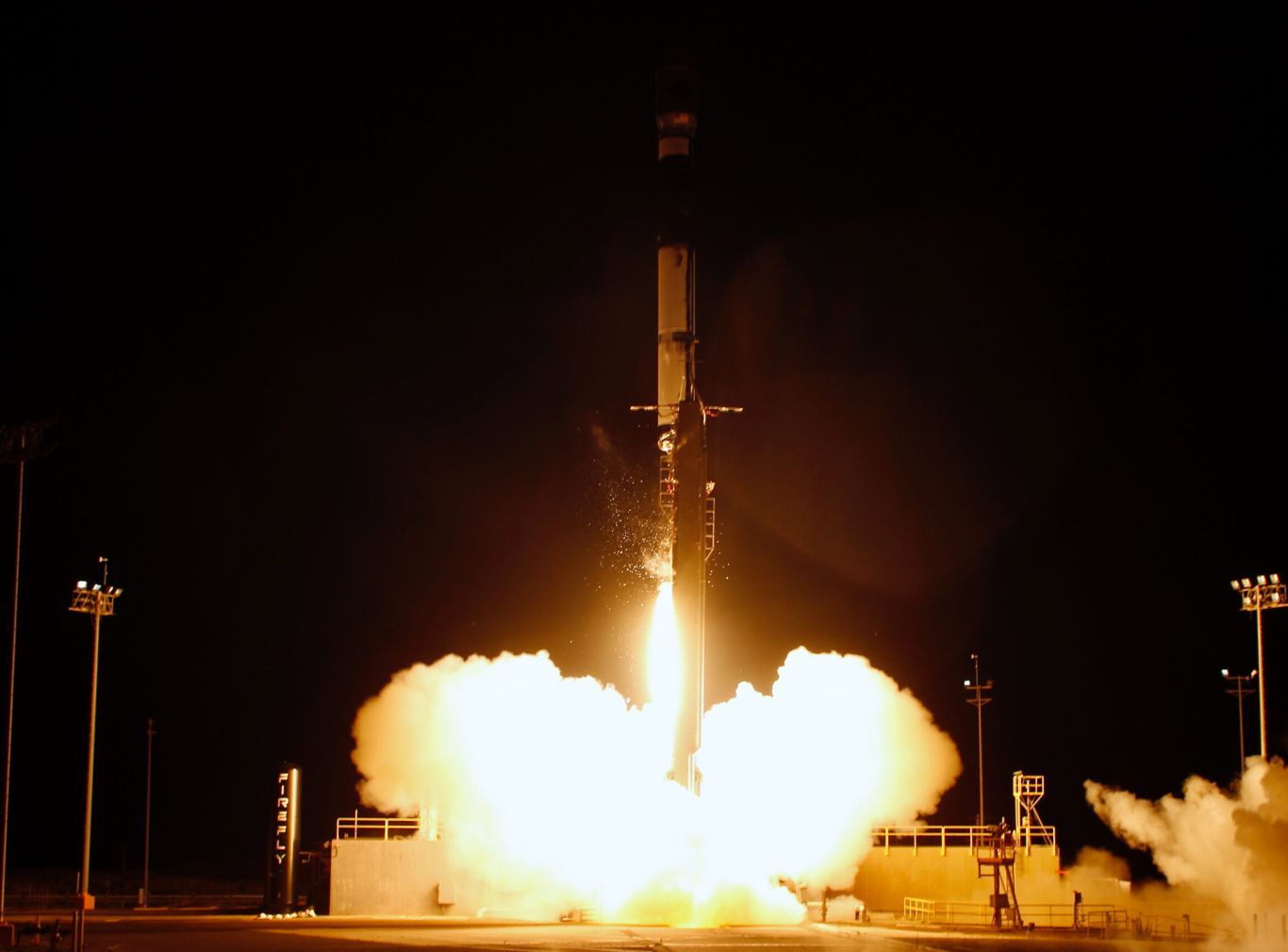
Firefly responsive launch (Image: Firefly)
Firefly launch Victus Nox, demonstrating reliance on commercial launch
One thing this does certainly highlight is that commercial space technology and innovation are becoming more vital for defence. The US and others will now be looking at how their technology can be secured reliably, and moreover, establish what the role of private companies will be during times of conflict.
Demonstrating this reliance on the private sector, this week Firefly Aerospace launched Victus Nox. The goal of the program is to demonstrate the United States’ capability to rapidly respond to on-orbit needs during a conflict or in response to a national security threat.
After being given notice from the US Space Forge, Firefly were given a 60-hour window to transport the payload to Vandenberg Space Force Base, conduct fueling operations, and integrate it with Firefly’s Alpha payload adaptor. After being given call to launch, Firefly then had 24 hours to measure the trajectory and launch the payload on their Alpha rocket. The mission launched on September 15th and successful deployed the satellite, built my Millennium Space.
In-space semi-conductor manufacture, debris removal launch coming
In-space manufacturing has taken leaps in recent months, looking at developments from companies such as Varda Space, who this year successfully manufactured pharmaceutical drugs in space, taking advantage of micro-gravity conditions for production of delicate materials.
This week it was announced that in-space manufacturing company, Space Forge, have struck a deal with aerospace giant, Northrop Grumman, who will help the company validate their technology and provide business advice and training. Space Forge look to manufacture delicate materials for semiconductors
As well as utilising the gravitational benefits of producing such materials in Earth orbit, the lack of atmosphere provides the opportunity to manufacture products that require a vacuum, reducing the cost of having to replicate these conditions on Earth. Also, once asteroid mining is utilised, it would remove the necessity to transport raw materials of the planet, saving costs and increasing efficiency. However, this may still be some years away yet.
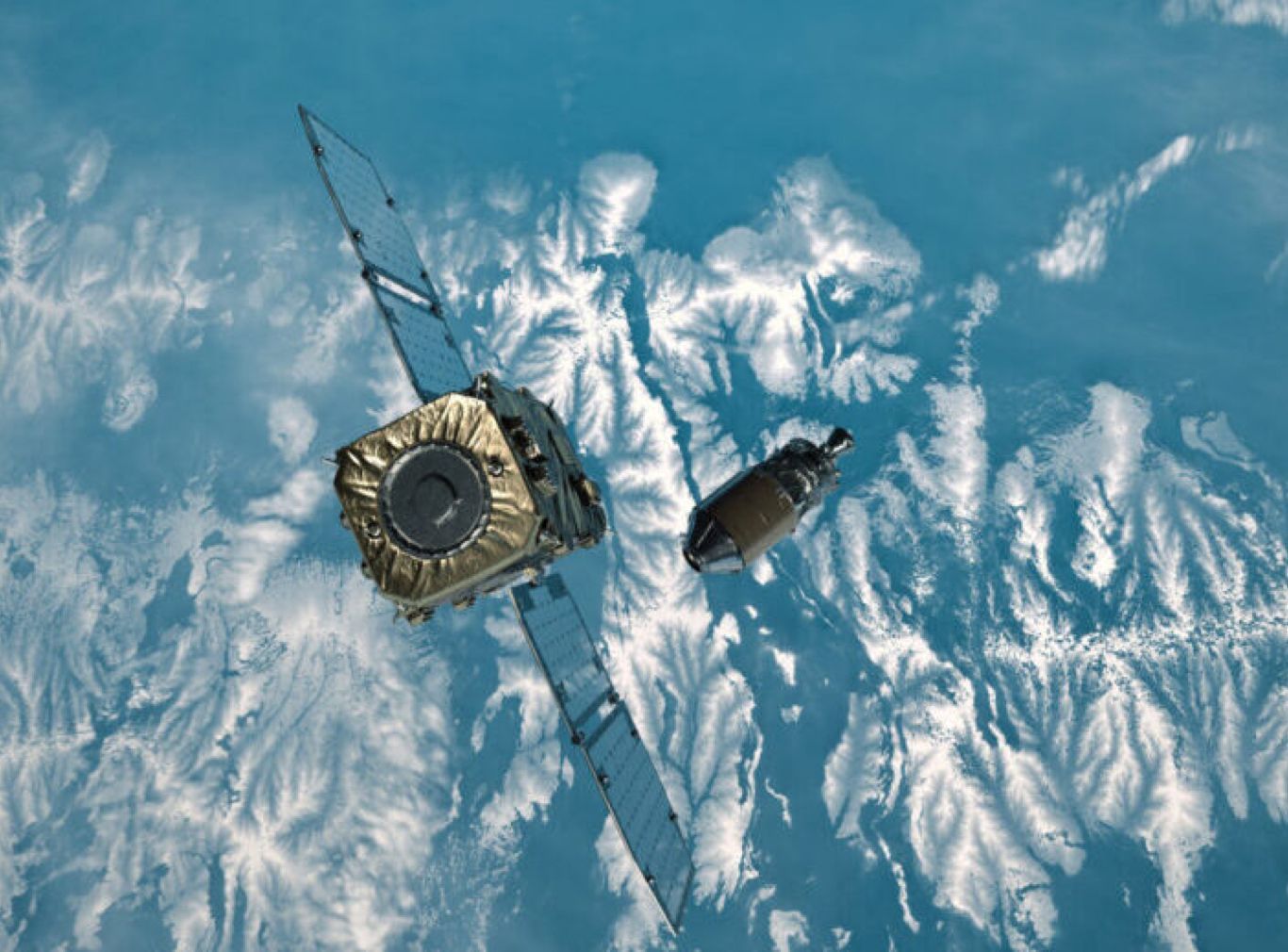
Astrocale's ADRAS-J satellite (Image: Astroscale)
Japan & Europe take on debris removal
Sustainability and space debris removal are clearly becoming key to the ongoing success of space utilisation and exploration, especially as the number of objects in orbit exponentially grows.
The head of the International Telecommunication Union (ITU) this week commented that the agency will commit to space sustainability, noting that the risk of space collision, caused by debris, poses a risk to the ongoing development of the space infrastructure. “As orbital traffic increases and intensifies, so does the urgency to maintain a safe and also a clean space environment that will protect the trillions of dollars’ worth of assets,” said Doreen Bogdan-Martin, secretary-general of the ITU.
Japan’s Astroscale will soon launch their ADRAS-J satellite, anticipated later this year, as part of their pioneering debris removal operation. ADRAS-J won’t remove the debris itself, but move into close proximity with a large accumulation of debris and gather as much data as possible. Astroscale could then later send its ELSA-d satellite to actually remove the object(s).
A recent article from The Good Men Project also highlighted the work being carried out by Toulouse-based company, My Space. They are leading a research project, which aims to build a first independant catalogue of 100,000 pieces of space debris measuring under 10cm, with the two-year study, named CASSIOPEE, ending in January next year.
Cooperation between entities such as My Space and Astroscale will be vital, as space is made safe for now and in the future. It also highlights the pioneering work being carried out by such companies, and the leading role that the commercial sector will play in making outer space safe and sustainable.
Our future in space
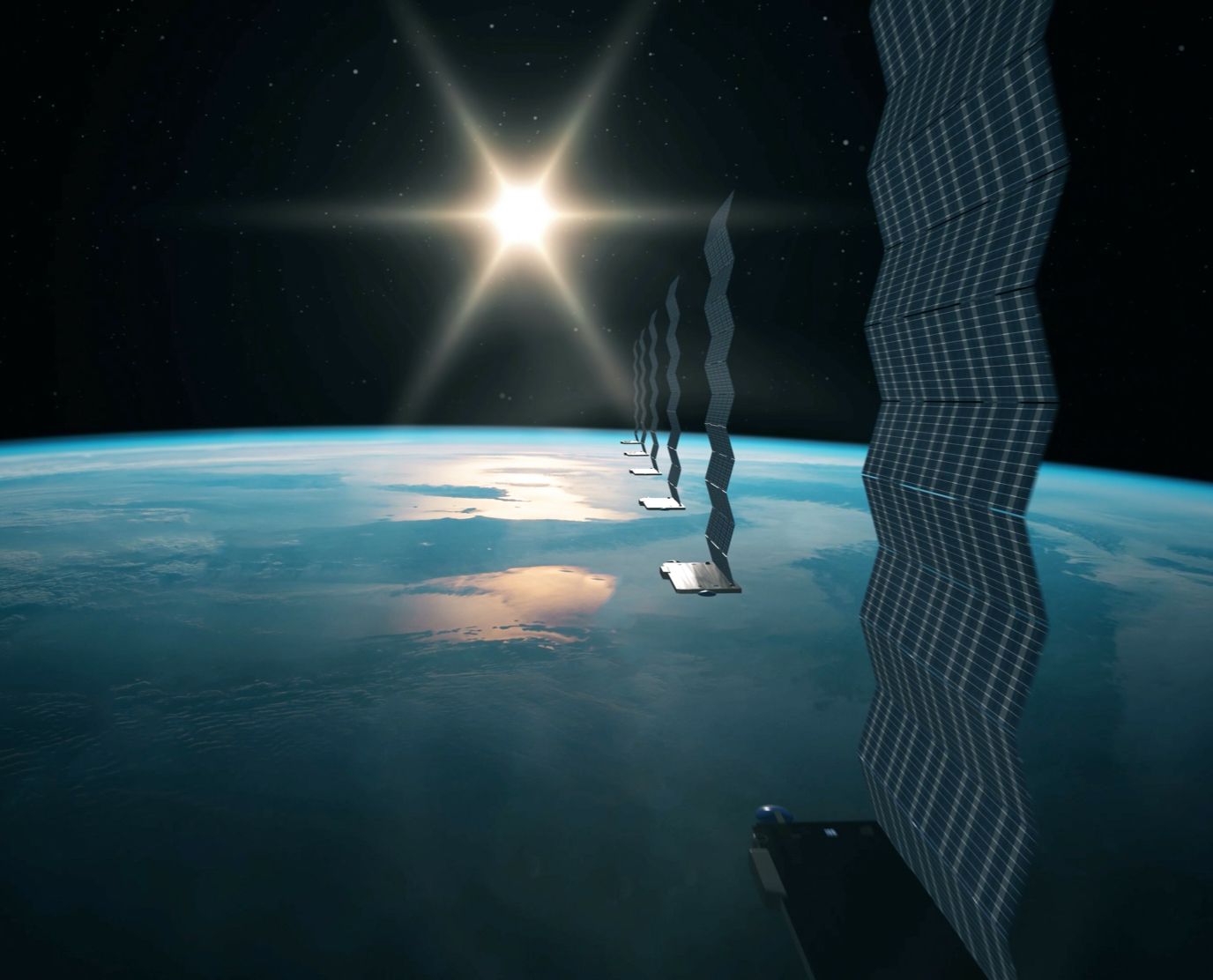
Elon Musk restricted Starlink in Ukraine (Image: Adobe)
15 September 2023
Space relations shifting, Musk in the spotlight and Firefly launch responsive mission - Space News Roundup
On September 8th, Virgin Galactic launched their third commercial space launch. On the flight was an unusual payload; fossils of a two million-year-old collarbone and a 250,000-year-old thumb, believed to have belonged to ancient human ancestors. Matthew Berger, who carried the fossils from their home in South Africa and handed them to passenger Timothy Nash, said that "These fossils represent individuals who lived and died hundreds of thousands of years ago, yet were individuals who likely gazed up at the stars in wonder, much as we do.”
tribute to our ancestors, saying that "Without their invention of technologies such as fire and tools, and their contribution to the evolution of the contemporary human mind, such extraordinary endeavours as spaceflight would not have happened.”
It is indeed the triumph of humanity and those who came before us, which has allowed us to take our next big step, into space. Yet we find ourselves at a crossroads, where new relations are being formed. But at the same time, the fallout from Earthly disputes and geopolitical conflict threatens to the stability of our new chapter.
India, China, UK & private entities pushing cooperation
At the end of last week, US president, Joe Biden, visited India where he met with Indian Prime Minister Narendra Modi, for a bilateral discussions. As well releasing a joint statement, emphasising the importance of “the shared values of freedom, democracy, human rights, inclusion, pluralism, and equal opportunities for all citizens”, the two also highlighted the importance of joint work in space.
Biden congratulated the rising space power on their successful Chandrayaan-3 lunar landing and Aditya-L1 solar observation missions. However, they went further, to commit to establishing a working group, focussed on commercial space collaboration. The US is, of course, the world leader in commercial space applications, and India is rapidly opening up its private sector in the space industry.
In 2020, India established the Indian National Space Promotion and Authorization Centre (IN–SPACe), an independant agency designed as a window to boost the Indian private sector. More recently, earlier this year, the ISRO announced that it was transferring its Small Satellite Launch Vehicle (SSLV) rocket launcher to the private sector.
Additionally, the two leaders, in their joint statement, announced that their respective agencies have “…commenced discussions on modalities, capacity building and training for mounting a joint effort to the International Space Station in 2024, and are continuing efforts to finalize a strategic framework for human spaceflight cooperation by the end of 2023.” In June, India also joined the US-led Artemis Accords, a framework outlining principles and guidelines for exploration of the Moon and beyond.
It seems that the US-Indian space relationship is blossoming, and may cause some concern to China and Russia, who also have laid out their own vision for our future in space.
European startup to work with India, UK pushes ties with UAE
European spacecraft startup, The Exploration Company, has also announced that it will be working with the ISRO (Indian Space Agency) for the launch of their reusable, orbital vehicle. Their “Nyx” vehicle is designed to deliver cargo and possibly astronauts to orbiting space stations, due to launch in 2027. However, before that, they will carry out a demonstration mission, named Bikini, slated for 2024, which will launch with the ISRO.
The UK are continuing their push to become a hub of cooperation in space. AzurX (Dubai), a space advisory company, will be working with UK-based AstroAgency in order to assist the UAE and Bahrain work with UK companies. The Arab nations and the UK have growing space industries, with the latter recently becoming the second most attractive place for private space investment, after the US.
Such relations as these go to show the diversification of the global space industry, and highlights the emergence of new leaders in a sector that was once dominated only by the few.
US claim on China threats, North Korea and Russia to collaborate
China also continue on their quest to reach out to global partners. An article from the Global Times this week highlighted how the China National Space Administration (CNSA) has “…shared over 1.5 terabytes of remote sensing satellite data with BRICS countries, and will continue to promote the application of remote sensing satellite data to all walks of life in BRICS members’ societies.”
BRICS nations are made up of Brazil, Russia, India, China and South Africa. Last week we also read that South Africa have become the latest nation to sign-up to China’s International Lunar Research Station project, a vision similar to the of the US Artemis project.
Russia and Iran also appear to be building ties. Last year Russia launched an Iranian satellite into orbit, marking an uptick in their space relations. Now this week it was revealed that the two nations will work together to develop a spacecraft within two years, a project led by the University of Tehran and the Moscow State University.
It seems that Russia has had to source new partners in the space sector, after severing ties with the US and the West after the Ukraine invasion.
This week the Valdimir Putin welcomed North Korean leader, Kim Jong-Un, for talks, before which he showed him around one of Russia’s modern space launch sites. Putin went on to say that Russia will assist North Korea in space, saying that "That's why we came here. The leader of the DPRK shows great interest in rocket engineering; they are also trying to develop space.”
North Korea have recently had failed attempts at launching their own satellites, but may now seek Russian help. This may come as an alarming development to the US and its allies, with Russia likely to look for weapons in return for space technology.
Is Elon Musk’s space domination helping US or hindering international relations?
Carrying on from last week’s revelation, that Elon Musk may have prevented Ukrainian forces from using Starlink to attack Russian targets in Crimea, questions have been raised surrounding Musk’s influence and the role of the private sector for defence purposes.
When asked about the incident, Secretary of State Antony Blinken avoided the issue, but admitted that “Starlink has been a vital tool for Ukrainians to be able to communicate with each other and particularly for the military to communicate in their efforts to defend all of Ukraine’s territory.” Nonetheless, Elon Musk has come under criticism for denying its use in direct conflict.
The US military does rely on SpaceX for a number of applications, such as satellite launches. Does this incident therefore mean that Musk retains too much influence in geopolitics and/or policy-making? Air Force Secretary Frank Kendall has suggested that “If we’re (US) going to rely upon commercial architectures or commercial systems for operational use, then we have to have some assurances that they’re going to be available," Kendall said.
However, it needs to be noted that at the time of the incident (September 2022), SpaceX was not under contract by the US military and Starlink had been offered to Ukraine for free after the Russian invasion, in a contract only with USAID, an independant government agency which administers civilian foreign aid.
This then raises two arguments; was Musk’s decision then vital in order to not escalate tensions and embroil the commercial sector in the conflict? Or does this incident represent the concerning weight of influence a private company/individual can have, due to their advanced space technology?

(Firefly responsive launch (Image: Firefly)
Firefly launch Victus Nox, demonstrating reliance on commercial launch
One thing this does certainly highlight is that commercial space technology and innovation are becoming more vital for defence. The US and others will now be looking at how their technology can be secured reliably, and moreover, establish what the role of private companies will be during times of conflict.
Demonstrating this reliance on the private sector, this week Firefly Aerospace launched Victus Nox. The goal of the program is to demonstrate the United States’ capability to rapidly respond to on-orbit needs during a conflict or in response to a national security threat.
After being given notice from the US Space Forge, Firefly were given a 60-hour window to transport the payload to Vandenberg Space Force Base, conduct fueling operations, and integrate it with Firefly’s Alpha payload adaptor. After being given call to launch, Firefly then had 24 hours to measure the trajectory and launch the payload on their Alpha rocket. The mission launched on September 15th and successful deployed the satellite, built my Millennium Space.
In-space semi-conductor manufacture, debris removal launch coming
In-space manufacturing has taken leaps in recent months, looking at developments from companies such as Varda Space, who this year successfully manufactured pharmaceutical drugs in space, taking advantage of micro-gravity conditions for production of delicate materials.
This week it was announced that in-space manufacturing company, Space Forge, have struck a deal with aerospace giant, Northrop Grumman, who will help the company validate their technology and provide business advice and training. Space Forge look to manufacture delicate materials for semiconductors
As well as utilising the gravitational benefits of producing such materials in Earth orbit, the lack of atmosphere provides the opportunity to manufacture products that require a vacuum, reducing the cost of having to replicate these conditions on Earth. Also, once asteroid mining is utilised, it would remove the necessity to transport raw materials of the planet, saving costs and increasing efficiency. However, this may still be some years away yet.
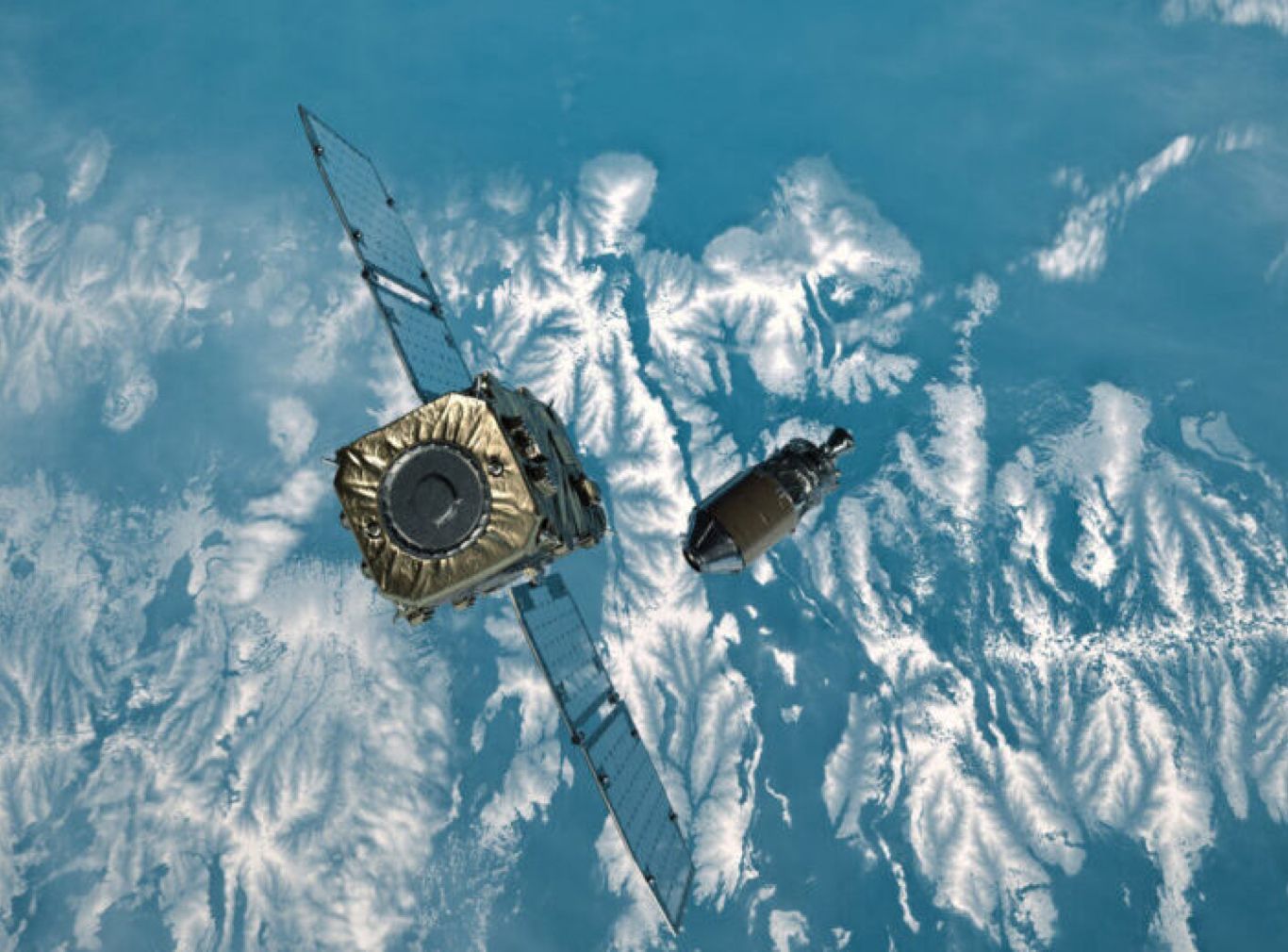
Astrocale's ADRAS-J satellite (Image: Astroscale)
Japan & Europe take on debris removal
Sustainability and space debris removal are clearly becoming key to the ongoing success of space utilisation and exploration, especially as the number of objects in orbit exponentially grows.
The head of the International Telecommunication Union (ITU) this week commented that the agency will commit to space sustainability, noting that the risk of space collision, caused by debris, poses a risk to the ongoing development of the space infrastructure. “As orbital traffic increases and intensifies, so does the urgency to maintain a safe and also a clean space environment that will protect the trillions of dollars’ worth of assets,” said Doreen Bogdan-Martin, secretary-general of the ITU.
Japan’s Astroscale will soon launch their ADRAS-J satellite, anticipated later this year, as part of their pioneering debris removal operation. ADRAS-J won’t remove the debris itself, but move into close proximity with a large accumulation of debris and gather as much data as possible. Astroscale could then later send its ELSA-d satellite to actually remove the object(s).
A recent article from The Good Men Project also highlighted the work being carried out by Toulouse-based company, My Space. They are leading a research project, which aims to build a first independant catalogue of 100,000 pieces of space debris measuring under 10cm, with the two-year study, named CASSIOPEE, ending in January next year.
Cooperation between entities such as My Space and Astroscale will be vital, as space is made safe for now and in the future. It also highlights the pioneering work being carried out by such companies, and the leading role that the commercial sector will play in making outer space safe and sustainable.
Share this article
External Links
This Week
*News articles posted here are not property of ANASDA GmbH and belong to their respected owners. Postings here are external links only.
15 September 2023
Space relations shifting, Musk in the spotlight and Firefly launch responsive mission - Space News Roundup
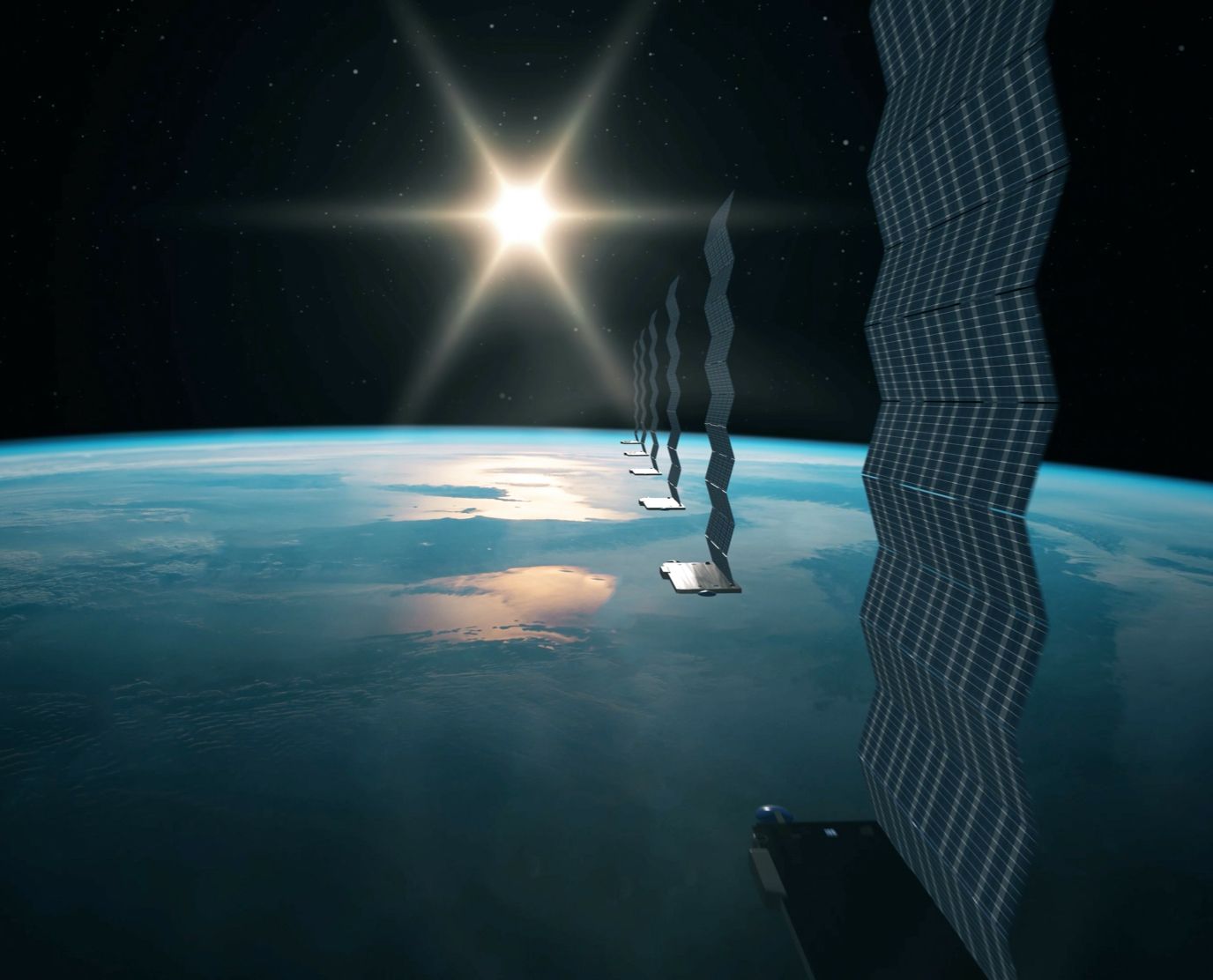
Elon Musk restricted Starlink in Ukraine (Image: Adobe)
On September 8th, Virgin Galactic launched their third commercial space launch. On the flight was an unusual payload; fossils of a two million-year-old collarbone and a 250,000-year-old thumb, believed to have belonged to ancient human ancestors. Matthew Berger, who carried the fossils from their home in South Africa and handed them to passenger Timothy Nash, said that "These fossils represent individuals who lived and died hundreds of thousands of years ago, yet were individuals who likely gazed up at the stars in wonder, much as we do.”
Lee Berger, a paleoanthropologist at the University of Witwatersrand, South Africa, paid tribute to our ancestors, saying that "Without their invention of technologies such as fire and tools, and their contribution to the evolution of the contemporary human mind, such extraordinary endeavours as spaceflight would not have happened.”
It is indeed the triumph of humanity and those who came before us, which has allowed us to take our next big step, into space. Yet we find ourselves at a crossroads, where new relations are being formed. But at the same time, the fallout from Earthly disputes and geopolitical conflict threatens to the stability of our new chapter.
India, China, UK & private entities pushing cooperation
At the end of last week, US president, Joe Biden, visited India where he met with Indian Prime Minister Narendra Modi, for a bilateral discussions. As well releasing a joint statement, emphasising the importance of “the shared values of freedom, democracy, human rights, inclusion, pluralism, and equal opportunities for all citizens”, the two also highlighted the importance of joint work in space.
Biden congratulated the rising space power on their successful Chandrayaan-3 lunar landing and Aditya-L1 solar observation missions. However, they went further, to commit to establishing a working group, focussed on commercial space collaboration. The US is, of course, the world leader in commercial space applications, and India is rapidly opening up its private sector in the space industry.
In 2020, India established the Indian National Space Promotion and Authorization Centre (IN–SPACe), an independant agency designed as a window to boost the Indian private sector. More recently, earlier this year, the ISRO announced that it was transferring its Small Satellite Launch Vehicle (SSLV) rocket launcher to the private sector.
Additionally, the two leaders, in their joint statement, announced that their respective agencies have “…commenced discussions on modalities, capacity building and training for mounting a joint effort to the International Space Station in 2024, and are continuing efforts to finalize a strategic framework for human spaceflight cooperation by the end of 2023.” In June, India also joined the US-led Artemis Accords, a framework outlining principles and guidelines for exploration of the Moon and beyond.
It seems that the US-Indian space relationship is blossoming, and may cause some concern to China and Russia, who also have laid out their own vision for our future in space.
European startup to work with India, UK pushes ties with UAE
European spacecraft startup, The Exploration Company, has also announced that it will be working with the ISRO (Indian Space Agency) for the launch of their reusable, orbital vehicle. Their “Nyx” vehicle is designed to deliver cargo and possibly astronauts to orbiting space stations, due to launch in 2027. However, before that, they will carry out a demonstration mission, named Bikini, slated for 2024, which will launch with the ISRO.
The UK are continuing their push to become a hub of cooperation in space. AzurX (Dubai), a space advisory company, will be working with UK-based AstroAgency in order to assist the UAE and Bahrain work with UK companies. The Arab nations and the UK have growing space industries, with the latter recently becoming the second most attractive place for private space investment, after the US.
Such relations as these go to show the diversification of the global space industry, and highlights the emergence of new leaders in a sector that was once dominated only by the few.
US claim on China threats, North Korea and Russia to collaborate
China also continue on their quest to reach out to global partners. An article from the Global Times this week highlighted how the China National Space Administration (CNSA) has “…shared over 1.5 terabytes of remote sensing satellite data with BRICS countries, and will continue to promote the application of remote sensing satellite data to all walks of life in BRICS members’ societies.”
BRICS nations are made up of Brazil, Russia, India, China and South Africa. Last week we also read that South Africa have become the latest nation to sign-up to China’s International Lunar Research Station project, a vision similar to the of the US Artemis project.
Russia and Iran also appear to be building ties. Last year Russia launched an Iranian satellite into orbit, marking an uptick in their space relations. Now this week it was revealed that the two nations will work together to develop a spacecraft within two years, a project led by the University of Tehran and the Moscow State University.
It seems that Russia has had to source new partners in the space sector, after severing ties with the US and the West after the Ukraine invasion.
This week the Valdimir Putin welcomed North Korean leader, Kim Jong-Un, for talks, before which he showed him around one of Russia’s modern space launch sites. Putin went on to say that Russia will assist North Korea in space, saying that "That's why we came here. The leader of the DPRK shows great interest in rocket engineering; they are also trying to develop space.”
North Korea have recently had failed attempts at launching their own satellites, but may now seek Russian help. This may come as an alarming development to the US and its allies, with Russia likely to look for weapons in return for space technology.
Is Elon Musk’s space domination helping US or hindering international relations?
Carrying on from last week’s revelation, that Elon Musk may have prevented Ukrainian forces from using Starlink to attack Russian targets in Crimea, questions have been raised surrounding Musk’s influence and the role of the private sector for defence purposes.
When asked about the incident, Secretary of State Antony Blinken avoided the issue, but admitted that “Starlink has been a vital tool for Ukrainians to be able to communicate with each other and particularly for the military to communicate in their efforts to defend all of Ukraine’s territory.” Nonetheless, Elon Musk has come under criticism for denying its use in direct conflict.
The US military does rely on SpaceX for a number of applications, such as satellite launches. Does this incident therefore mean that Musk retains too much influence in geopolitics and/or policy-making? Air Force Secretary Frank Kendall has suggested that “If we’re (US) going to rely upon commercial architectures or commercial systems for operational use, then we have to have some assurances that they’re going to be available," Kendall said.
However, it needs to be noted that at the time of the incident (September 2022), SpaceX was not under contract by the US military and Starlink had been offered to Ukraine for free after the Russian invasion, in a contract only with USAID, an independant government agency which administers civilian foreign aid.
This then raises two arguments; was Musk’s decision then vital in order to not escalate tensions and embroil the commercial sector in the conflict? Or does this incident represent the concerning weight of influence a private company/individual can have, due to their advanced space technology?
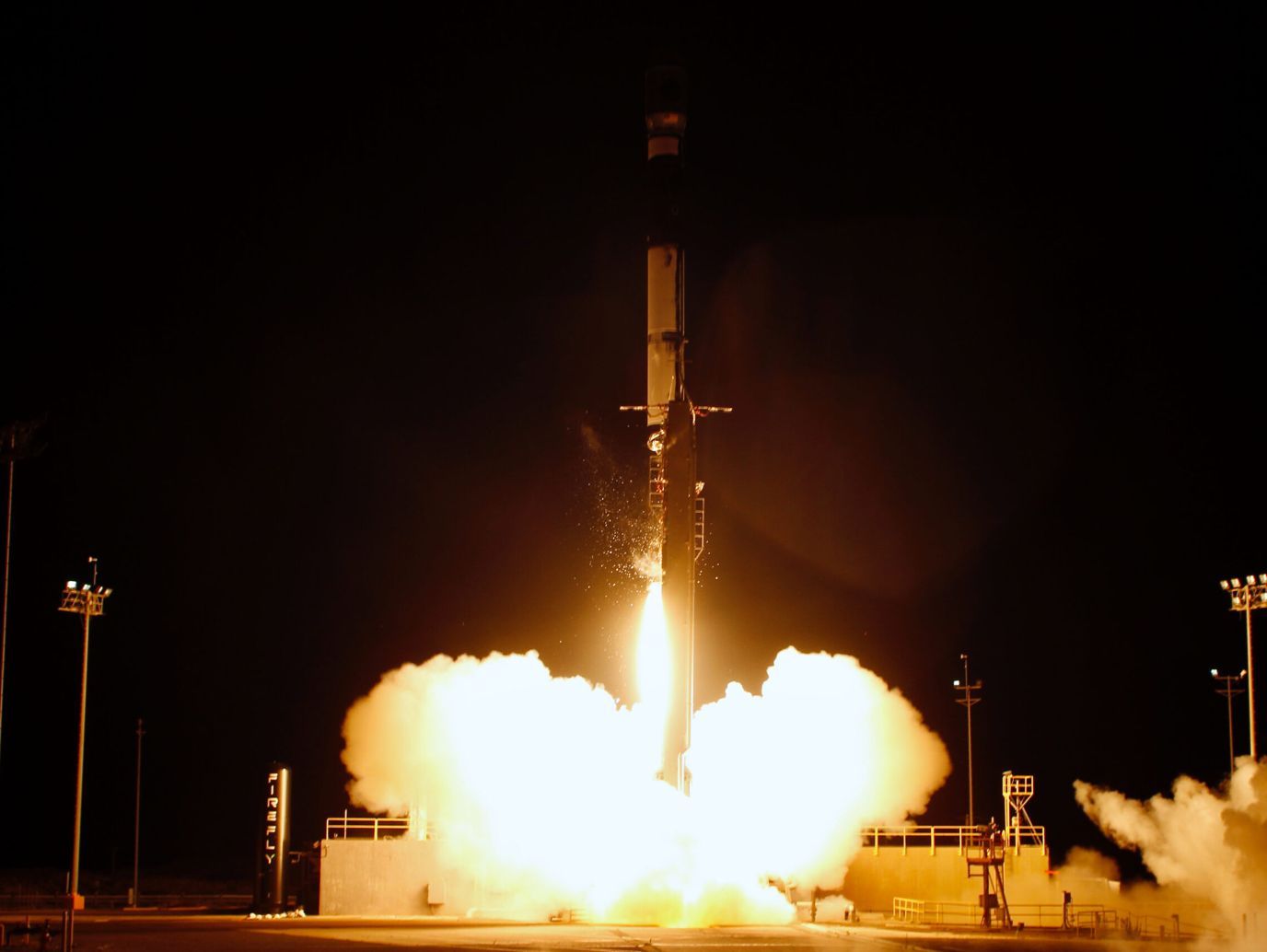
Firefly responsive launch (Image: Firefly)
Firefly launch Victus Nox, demonstrating reliance on commercial launch
One thing this does certainly highlight is that commercial space technology and innovation are becoming more vital for defence. The US and others will now be looking at how their technology can be secured reliably, and moreover, establish what the role of private companies will be during times of conflict.
Demonstrating this reliance on the private sector, this week Firefly Aerospace launched Victus Nox. The goal of the program is to demonstrate the United States’ capability to rapidly respond to on-orbit needs during a conflict or in response to a national security threat.
After being given notice from the US Space Forge, Firefly were given a 60-hour window to transport the payload to Vandenberg Space Force Base, conduct fueling operations, and integrate it with Firefly’s Alpha payload adaptor. After being given call to launch, Firefly then had 24 hours to measure the trajectory and launch the payload on their Alpha rocket. The mission launched on September 15th and successful deployed the satellite, built my Millennium Space.
In-space semi-conductor manufacture, debris removal launch coming
In-space manufacturing has taken leaps in recent months, looking at developments from companies such as Varda Space, who this year successfully manufactured pharmaceutical drugs in space, taking advantage of micro-gravity conditions for production of delicate materials.
This week it was announced that in-space manufacturing company, Space Forge, have struck a deal with aerospace giant, Northrop Grumman, who will help the company validate their technology and provide business advice and training. Space Forge look to manufacture delicate materials for semiconductors
As well as utilising the gravitational benefits of producing such materials in Earth orbit, the lack of atmosphere provides the opportunity to manufacture products that require a vacuum, reducing the cost of having to replicate these conditions on Earth. Also, once asteroid mining is utilised, it would remove the necessity to transport raw materials of the planet, saving costs and increasing efficiency. However, this may still be some years away yet.
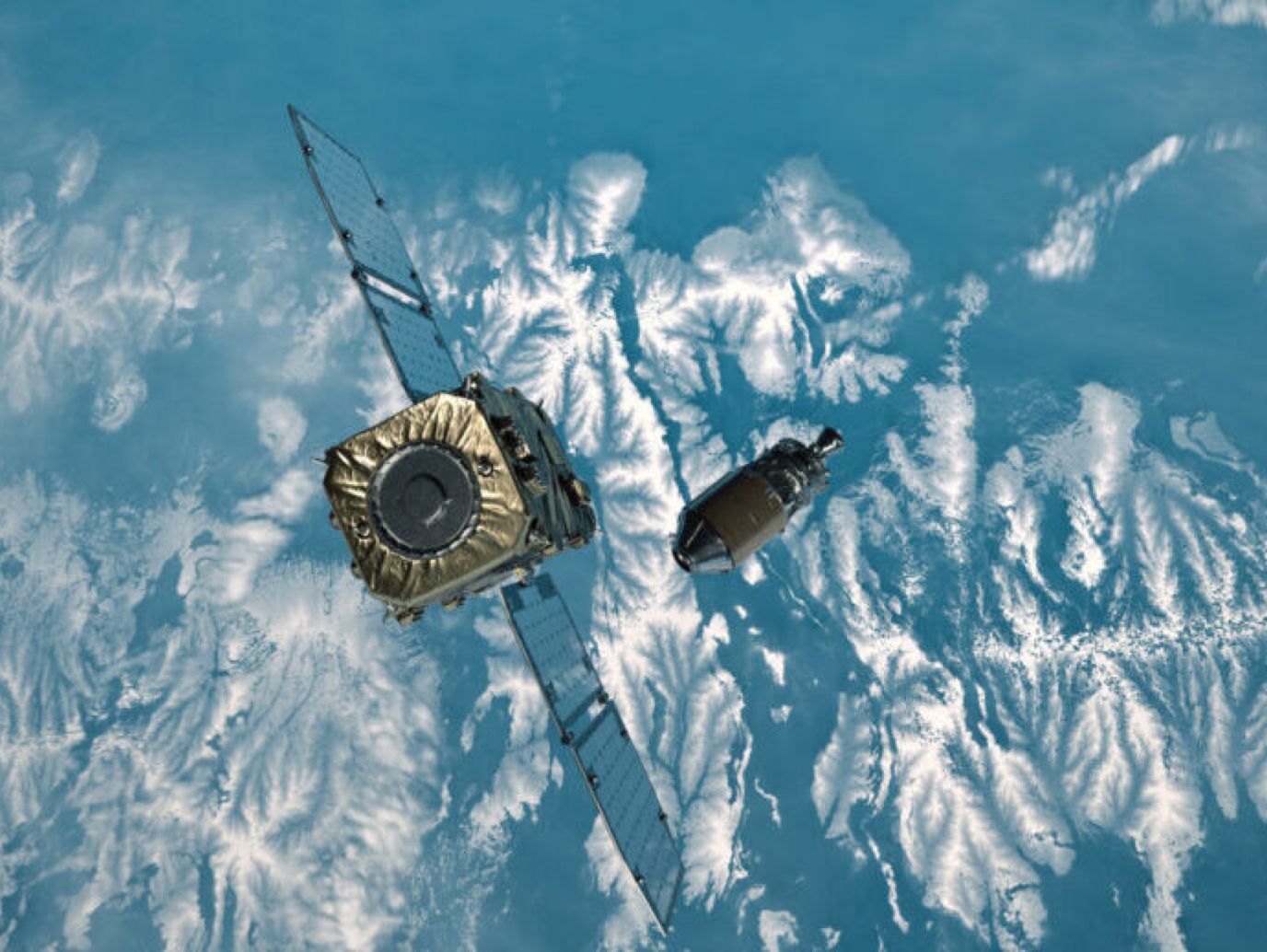
Astrocale's ADRAS-J satellite (Image: Astroscale)
Japan & Europe take on debris removal
Sustainability and space debris removal are clearly becoming key to the ongoing success of space utilisation and exploration, especially as the number of objects in orbit exponentially grows.
The head of the International Telecommunication Union (ITU) this week commented that the agency will commit to space sustainability, noting that the risk of space collision, caused by debris, poses a risk to the ongoing development of the space infrastructure. “As orbital traffic increases and intensifies, so does the urgency to maintain a safe and also a clean space environment that will protect the trillions of dollars’ worth of assets,” said Doreen Bogdan-Martin, secretary-general of the ITU.
Japan’s Astroscale will soon launch their ADRAS-J satellite, anticipated later this year, as part of their pioneering debris removal operation. ADRAS-J won’t remove the debris itself, but move into close proximity with a large accumulation of debris and gather as much data as possible. Astroscale could then later send its ELSA-d satellite to actually remove the object(s).
A recent article from The Good Men Project also highlighted the work being carried out by Toulouse-based company, My Space. They are leading a research project, which aims to build a first independant catalogue of 100,000 pieces of space debris measuring under 10cm, with the two-year study, named CASSIOPEE, ending in January next year.
Cooperation between entities such as My Space and Astroscale will be vital, as space is made safe for now and in the future. It also highlights the pioneering work being carried out by such companies, and the leading role that the commercial sector will play in making outer space safe and sustainable.
Share this article
External Links
This Week
*News articles posted here are not property of ANASDA GmbH and belong to their respected owners. Postings here are external links only.
































